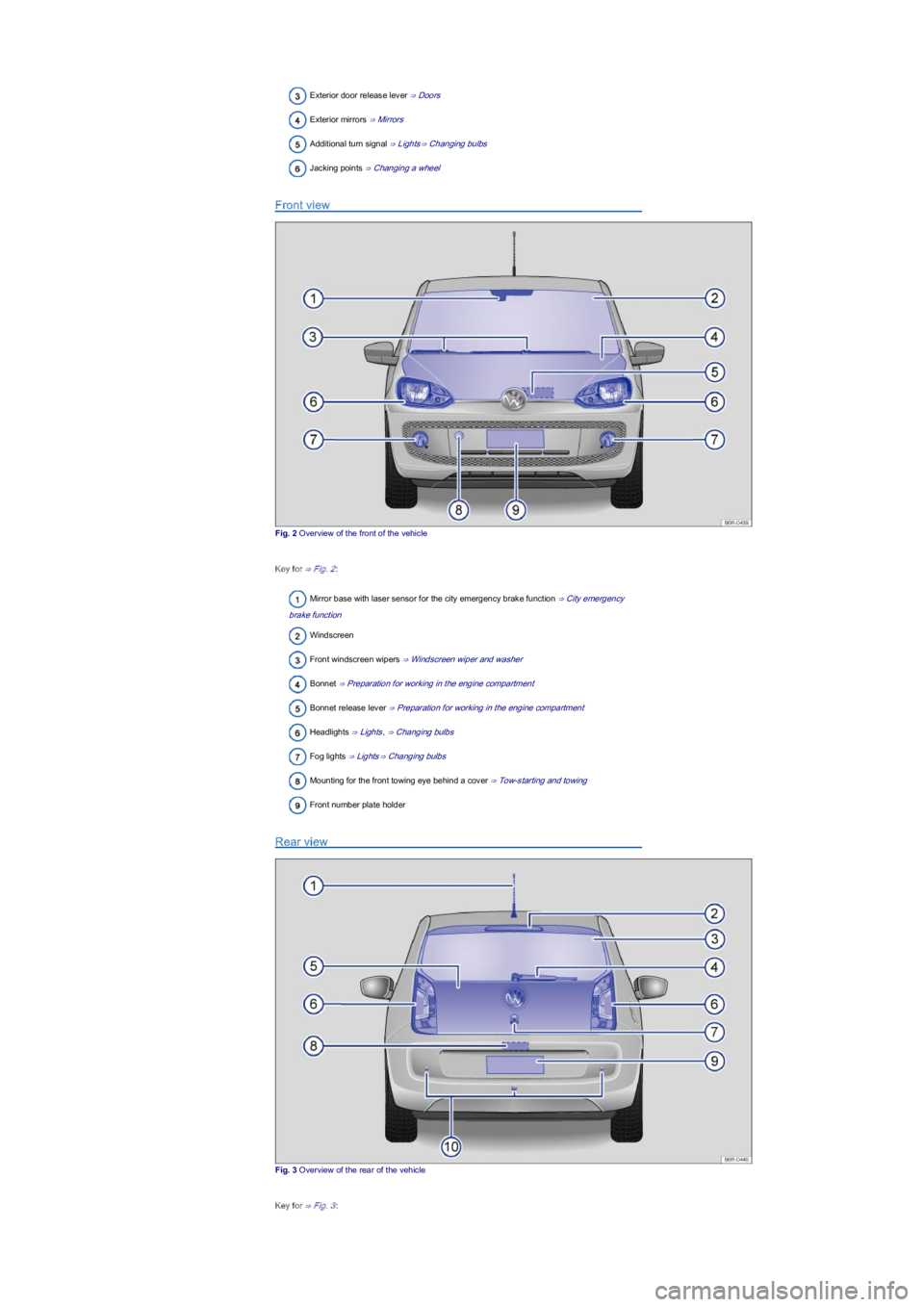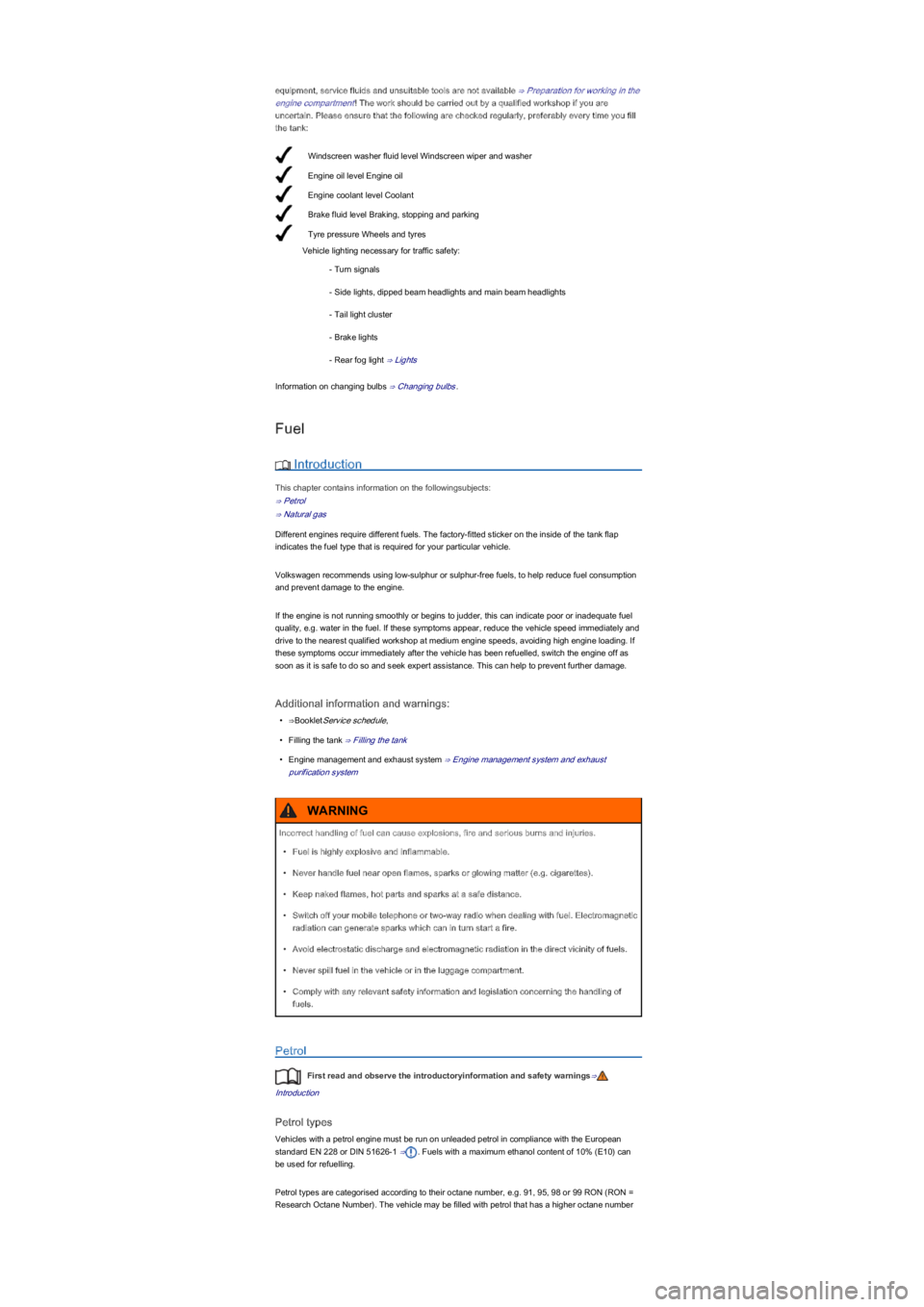Exterior door release lever ⇒ Doors
Exterior mirrors ⇒ Mirrors
Additional turn signal ⇒ Lights⇒ Changing bulbs
Jacking points ⇒ Changing a wheel
Front view
Fig. 2 Overview of the front of the vehicle
Key for ⇒ Fig. 2:
Mirror base with laser sensor for the city emergency brake function ⇒ City emergency
brake function
Windscreen
Front windscreen wipers ⇒ Windscreen wiper and washer
Bonnet ⇒ Preparation for working in the engine compartment
Bonnet release lever ⇒ Preparation for working in the engine compartment
Headlights ⇒ Lights, ⇒ Changing bulbs
Fog lights ⇒ Lights⇒ Changing bulbs
Mounting for the front towing eye behind a cover ⇒ Tow-starting and towing
Front number plate holder
Rear view
Fig. 3 Overview of the rear of the vehicle
Key for ⇒ Fig. 3:
Windscreen washer fluid level Windscreen wiper and washer
Engine oil level Engine oil
Engine coolant level Coolant
Brake fluid level Braking, stopping and parking
Tyre pressure Wheels and tyres
equipment, service fluids and unsuitable tools are not available ⇒ Preparation for working in the
engine compartment! The work should be carried out by a qualified workshop if you are
uncertain. Please ensure that the following are checked regularly, preferably every time you fill
the tank:
Vehicle lighting necessary for traffic safety:
- Turn signals
- Side lights, dipped beam headlights and main beam headlights
- Tail light cluster
- Brake lights
- Rear fog light ⇒ Lights
Information on changing bulbs ⇒ Changing bulbs.
Fuel
Introduction
This chapter contains information on the followingsubjects:
⇒ Petrol
⇒ Natural gas
Different engines require different fuels. The factory-fitted sticker on the inside of the tank flap
indicates the fuel type that is required for your particular vehicle.
Volkswagen recommends using low-sulphur or sulphur-free fuels, to help reduce fuel consumption
and prevent damage to the engine.
If the engine is not running smoothly or begins to judder, this can indicate poor or inadequate fuel
quality, e.g. water in the fuel. If these symptoms appear, reduce the vehicle speed immediately and
drive to the nearest qualified workshop at medium engine speeds, avoiding high engine loading. If
these symptoms occur immediately after the vehicle has been refuelled, switch the engine off as
soon as it is safe to do so and seek expert assistance. This can help to prevent further damage.
Additional information and warnings:
\f

